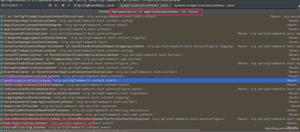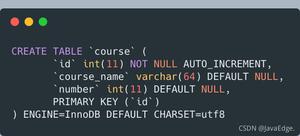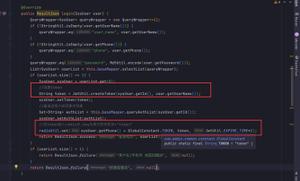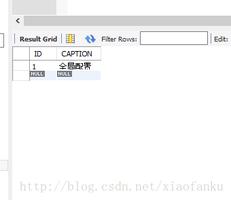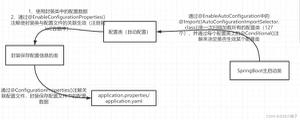Spring JSR-250 注释
本文内容纲要:
- Spring JSR-250 注释- @PostConstruct 和 @PreDestroy 注释:
- 示例
- @Resource 注释:
Spring JSR-250 注释
Spring还使用基于 JSR-250 注释,它包括 @PostConstruct, @PreDestroy 和 @Resource 注释。因为你已经有了其他的选择,尽管这些注释并不是真正所需要的,但是关于它们仍然让我给出一个简短的介绍。
@PostConstruct 和 @PreDestroy 注释:
为了定义一个 bean 的安装和卸载,我们使用 init-method 和/或 destroy-method 参数简单的声明一下 。init-method 属性指定了一个方法,该方法在 bean 的实例化阶段会立即被调用。同样地,destroy-method 指定了一个方法,该方法只在一个 bean 从容器中删除之前被调用。
你可以使用 @PostConstruct 注释作为初始化回调函数的一个替代,@PreDestroy 注释作为销毁回调函数的一个替代,其解释如下示例所示。
示例
让我们使 Eclipse IDE 处于工作状态,请按照下列步骤创建一个 Spring 应用程序:
| 步骤 | 描述 |
|---|---|
| 1 | 创建一个名为 SpringExample 的项目,并且在所创建项目的 src 文件夹下创建一个名为 com.tutorialspoint 的包。 |
| 2 | 使用 Add External JARs 选项添加所需的 Spring 库文件,就如在 Spring Hello World Example 章节中解释的那样。 |
| 3 | 在 com.tutorialspoint 包下创建 Java 类 HelloWorld 和 MainApp。 |
| 4 | 在 src 文件夹下创建 Beans 配置文件 Beans.xml。 |
| 5 | 最后一步是创建所有 Java 文件和 Bean 配置文件的内容,并且按如下解释的那样运行应用程序。 |
这里是 HelloWorld.java 文件的内容:
package com.tutorialspoint;import javax.annotation.*;
public class HelloWorld { private String message; public void setMessage(String message){ this.message = message; } public String getMessage(){ System.out.println("Your Message : " + message); return message; } @PostConstruct public void init(){ System.out.println("Bean is going through init."); } @PreDestroy public void destroy(){ System.out.println("Bean will destroy now."); } }
下面是 MainApp.java 文件的内容。这里你需要注册一个关闭钩 registerShutdownHook() 方法,该方法在 AbstractApplicationContext 类中被声明。这将确保一个完美的关闭并调用相关的销毁方法。
package com.tutorialspoint;import org.springframework.context.support.AbstractApplicationContext;
import org.springframework.context.support.ClassPathXmlApplicationContext;
public class MainApp { public static void main(String[] args) { AbstractApplicationContext context = new ClassPathXmlApplicationContext("Beans.xml"); HelloWorld obj = (HelloWorld) context.getBean("helloWorld"); obj.getMessage(); context.registerShutdownHook(); } }
下面是配置文件 Beans.xml,该文件在初始化和销毁方法中需要使用。
<?xml version="1.0" encoding="UTF-8"?><beans xmlns="http://www.springframework.org/schema/beans"
xmlns:xsi="http://www.w3.org/2001/XMLSchema-instance"
xmlns:context="http://www.springframework.org/schema/context" xsi:schemaLocation="http://www.springframework.org/schema/beans http://www.springframework.org/schema/beans/spring-beans-3.0.xsd http://www.springframework.org/schema/context http://www.springframework.org/schema/context/spring-context-3.0.xsd"> <context:annotation-config/> <bean id="helloWorld" class="com.tutorialspoint.HelloWorld" init-method="init" destroy-method="destroy"> <property name="message" value="Hello World!"/> </bean> </beans>
一旦你在源文件和 bean 配置文件中完成了上面两处改变,让我们运行一下应用程序。如果你的应用程序一切都正常的话,这将会输出以下消息:
Bean is going through init.Your Message : Hello World!
Bean will destroy now.
@Resource 注释:
你可以在字段中或者 setter 方法中使用 @Resource 注释,它和在 Java EE 5 中的运作是一样的。@Resource 注释使用一个 ‘name’ 属性,该属性以一个 bean 名称的形式被注入。你可以说,它遵循 by-name 自动连接语义,如下面的示例所示:
package com.tutorialspoint;import javax.annotation.Resource;
public class TextEditor { private SpellChecker spellChecker; @Resource(name= "spellChecker") public void setSpellChecker( SpellChecker spellChecker ){ this.spellChecker = spellChecker; } public SpellChecker getSpellChecker(){ return spellChecker; } public void spellCheck(){ spellChecker.checkSpelling(); } }
如果没有明确地指定一个 ‘name’,默认名称源于字段名或者 setter 方法。在字段的情况下,它使用的是字段名;在一个 setter 方法情况下,它使用的是 bean 属性名称。
本文内容总结:Spring JSR-250 注释,@PostConstruct 和 @PreDestroy 注释:,示例,@Resource 注释:,
原文链接:https://www.cnblogs.com/ymsblog/p/15745901.html
以上是 Spring JSR-250 注释 的全部内容, 来源链接: utcz.com/z/296390.html

